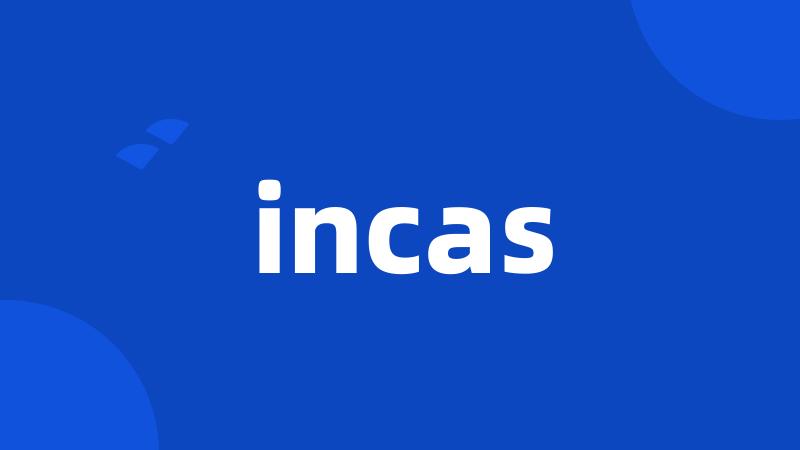incas
- 网络印加人;印加族;印加文明
 incas
incasincas
印加人
对印加人( Incas )而言,羊驼对 于 他们的帝国 尤其 重要, 亦是 最神秘的生物。虽然野生的 v icu?as 及南美野生羊驼 (Guan…
印加族
在秘鲁兴起的印加族(Incas)得到统治权时,是在一一三四年,在此以前的好几个世纪里,她的文化曾有过长期的发展,直到印 …
印加文明
...边地区发展出高度的文明,如马雅文明(Mayas),印加文明(Incas),阿兹特克文明(Aztecs),有著复杂的社会,并在科学上作 …
印加族人
...五百万人口秘鲁的首都,居民三百万左右,半数是印第安印加族人(Incas),四成是西班牙人与土著混血,其余是纯种西班牙人 …
印加帝国
在南美洲诞生了美洲最先进的土著闻名——秘鲁的印加帝国(Incas)。西班牙人和葡萄牙人在16世纪初发现了南美洲大陆,随 …
印加文化
考古学家前天从秘鲁Huaca Pucllana 遗址的古墓挖出一具木乃伊,据信生存年代是在印加文化(Incas)之前的古瓦里文化(Wa…
玛雅
欧洲殖民美洲 - 维基百科,自由的百科全书 ... 西班牙殖民统治 French colonization 玛雅 Incas 地理 Indigenous languages ...
1
Scholars have variously theorized it was the birthplace of the Incas, a private estate, and a spiritual destination.
科学家有不同的理论,这个城市作为一个神秘的地点而存在,是Incas的发源地,也是一个精神朝拜的地方。
2
Machu Picchu is probably the most familiar symbol of the Inca Empire. It is often referred to as "The Lost City of the Incas" .
马丘比丘可能是印加政权最为人所知的象征,常被称为“印加失落的古城”。
3
Today "the lost city of the Incas" reaches across the centuries to give us a glimpse of this unique culture.
今天,经历了几个世纪沧桑的“印加迷失之城”,使我们得以一窥它独特的文化。
4
In the early sixteenth century, when the Incas built Machu Picchu they were at the peak of their power ruling a large south American empire.
16世纪初,印加人建造马丘•比丘古城时,他们统治着一个巨大的南美帝国,正处于鼎盛时期。
5
The Incas adopted and improved the agricultural advances of previous highland cultures, and gave special importance to maize production.
印加人在过去高山文化基础上应用并促进了农业的进步,特别注重玉米的生产。
6
Centuries later, it allowed the Incas to farm maize in the high mountains, providing a grain surplus that let their civilisation take off.
几个世纪之后,印加人开始在高山上种植玉米,提供了大量谷物盈余来让他们的文明起飞。
7
Meticulous9 planning and engineering meant the Incas wanted their powerful stone structures to stand the test of time.
精心的规划和施工说明,印加人希望他们充满威力的石头建筑可以经受住时间的考验。
8
Cocoa trees were being grown by the Aztecs of Mexico and the Incas of Peru when the Europeans discovered central America.
欧洲人发现中美洲时,可可树由墨西哥的阿芝特克人和秘鲁的印加人所种植。
9
This mountain retreat is built high in the Andes and is sometimes called the "Lost city of the Incas. "
这个世外桃源建在高高的安第斯山上,有时候被称作“印加文明失落的城市”。
10
In the 15th century, the Incas ruled the biggest empire South America had ever seen, but their fabulous cities of gold had humble origins.
15世纪,印加人统治着南美最大的王国,但是这个美轮美奂的黄金之城的起源却非常卑微。
11
The ransom paid by the Incas to release their emperor was filling a room that measured 22 by 17 feet with gold, and two with silver.
印加人为求国王获释,缴付赎金,以黄金堆满一个二十二乘十七英尺的房间,又以白银堆满两个房间。
12
Peru's many cultures stretch back for more than 5, 000 years, way beyond the Incas and their Spanish conquerors.
秘鲁许多文明可以追溯至5000多年以前,远在印加人和西班牙征服者之前。
13
You can even start to learn about another civilization like the Aztecs or Incas .
你也可以学习其他的文明,例如:阿兹特克文明或者是印加文明。
14
From the Incas to the present day, humanity has made little impression here.
从印加时期至今,人类在此几乎没有留下任何足迹。
15
At these periods, the Incas held ceremonies there.
每逢这些日子,印加人便在此举行庆典活动。
16
When the Spanish arrived in the New World , they found that the Incas , the Mayas , and the Aztecs knew how to mak cotton cloth.
当西班牙人到达新大陆时,他们发现印加人、玛雅人和阿兹特克人都知道怎样制造棉布。
17
Around AD 1200 in Peru, a small group of warlike people called the Incas began conquering and absorbing neighboring clans.
在西元一千二百年左右的秘鲁,有一小群好战的人——称为印加人——开始征服并吸纳邻近的部落。
18
Using a carrot-and-stick policy, the Incas offered benefits such as power and wealth to leaders that accepted their rule.
印加人运用高压怀柔政策,提供诸如权力、财富之类的好处给接受其统治的领导者。
19
fifth is machu picchu , the 15th century hidden mountain city of the incas in peru.
第五大奇迹是马丘比丘,15世纪秘鲁印加人的隐秘山城。
20
Tomatoes were first cultivated in 700 AD by Aztecs and Incas .
番茄首次种植于公元700年由阿芝台克和印加人。
